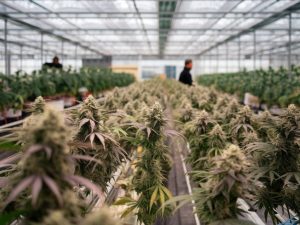The Rise of Cool Roofing in Sustainable Construction
In recent years, the construction industry has witnessed a significant shift towards sustainable practices, with cool roofing emerging as a key player in this green revolution. Cool roofing technology has gained traction due to its ability to reduce energy consumption, mitigate urban heat island effects, and contribute to overall building efficiency. This article explores the latest trends and innovations shaping the cool roofing industry and its impact on sustainable construction.
Understanding Cool Roofing Technology
Cool roofing refers to roofing systems designed to reflect more sunlight and absorb less heat than traditional roofing materials. These roofs typically use highly reflective materials or special coatings that can significantly lower roof surface temperatures, especially during hot summer months. The primary benefits of cool roofing include:
As the demand for sustainable building solutions continues to grow, the cool roofing industry has responded with innovative products and technologies to meet these evolving needs.
Current Trends in Cool Roofing
The cool roofing market is experiencing rapid growth, driven by increasing awareness of environmental issues and stringent energy efficiency regulations. Several trends are currently shaping the industry:
1. Advanced Reflective Coatings
Manufacturers are developing increasingly sophisticated reflective coatings that can be applied to various roofing substrates. These coatings often incorporate nanotechnology to enhance their reflective properties and durability. Some innovative products include:
2. Cool Roofing Membranes
Single-ply roofing membranes with high solar reflectance and thermal emittance are gaining popularity in commercial and industrial applications. These membranes, typically made from materials like TPO (Thermoplastic Polyolefin) or PVC (Polyvinyl Chloride), offer excellent cool roofing properties while providing durability and weather resistance.
3. Green Roofs and Cool Roofing Hybrids
The integration of green roofing systems with cool roofing technology is an emerging trend. These hybrid systems combine the benefits of vegetative roofs with the reflective properties of cool roofing materials, offering enhanced insulation, stormwater management, and urban heat island mitigation.
4. Smart Cool Roofing Systems
The advent of Internet of Things (IoT) technology has led to the development of smart cool roofing systems. These systems incorporate sensors and automated controls to optimize roof performance based on real-time weather conditions and building energy demands.
Innovations Driving the Cool Roofing Industry
Continuous research and development efforts are pushing the boundaries of cool roofing technology. Some noteworthy innovations include:
1. Phase Change Materials (PCMs)
PCMs are being integrated into cool roofing systems to provide additional thermal management capabilities. These materials can absorb and release heat as they change phase, helping to regulate indoor temperatures and further reduce cooling loads.
2. Cool Photovoltaic Roofing
Researchers are developing cool roofing materials that can be seamlessly integrated with photovoltaic panels. This innovation combines the benefits of solar energy generation with the cooling properties of reflective roofing, maximizing the roof’s contribution to building sustainability.
3. Retroreflective Materials
Advanced retroreflective materials are being explored for cool roofing applications. These materials can reflect sunlight back in the direction it came from, potentially increasing the overall reflectivity of the roof and reducing heat absorption.
4. Bio-based Cool Roofing Materials
The development of sustainable, bio-based cool roofing materials is gaining momentum. These materials, derived from renewable resources, offer excellent cooling properties while reducing the environmental impact associated with traditional petroleum-based roofing products.
Challenges and Future Outlook
Despite the rapid advancements in cool roofing technology, the industry faces several challenges:
However, the future outlook for the cool roofing industry remains promising. As climate change concerns intensify and energy efficiency regulations become more stringent, the demand for innovative cool roofing solutions is expected to grow. The industry is likely to see continued investment in research and development, leading to more efficient and cost-effective cool roofing technologies.
Impact on Sustainable Construction
The cool roofing industry is playing a crucial role in shaping sustainable construction practices. By reducing energy consumption, mitigating urban heat island effects, and improving overall building performance, cool roofing technologies are helping architects, builders, and property owners meet increasingly demanding sustainability goals.
As the industry continues to evolve, we can expect to see greater integration of cool roofing with other sustainable building technologies, such as smart building management systems, renewable energy systems, and advanced insulation materials. This holistic approach to building design and construction will be essential in creating the energy-efficient, environmentally friendly buildings of the future.
The Role of Policy and Standards
Government policies and industry standards play a crucial role in driving the adoption of cool roofing technologies. Many countries and regions have implemented building codes and energy efficiency standards that encourage or mandate the use of cool roofing materials. For example:
As these policies and standards continue to evolve, they are likely to further accelerate the growth of the cool roofing industry and its impact on sustainable construction practices.
The Global Cool Roofing Market
The global cool roofing market is experiencing robust growth, with projections indicating continued expansion in the coming years. Factors driving this growth include:
As the market expands, we can expect to see increased competition among manufacturers, leading to more innovative products and potentially lower costs for consumers. This trend is likely to make cool roofing solutions more accessible to a wider range of building projects, from residential to large-scale commercial and industrial applications.
In summary, the cool roofing industry is at the forefront of sustainable construction, driving innovation and shaping the way we approach building design and energy efficiency. As the industry continues to evolve, it will play an increasingly important role in creating more sustainable, resilient, and environmentally friendly built environments for future generations.
 Previous post
Swiss cannabis industry and business: opportunities and challenges in a growing market
Previous post
Swiss cannabis industry and business: opportunities and challenges in a growing market
More Stories
CBD market in Europe: booming expansion opportunity for entrepreneurs
The Rise of CBD in Europe: A Growing MarketThe CBD market in Europe is experiencing unprecedented growth, presenting a golden...
Vanlife business in Europe: emerging trends and entrepreneurial opportunities
The Rise of Vanlife in EuropeVanlife, a lifestyle trend that combines minimalism, nomadism, and adventure, has been gaining significant traction...
Swiss cannabis industry and business: opportunities and challenges in a growing market
The Evolving Swiss Cannabis LandscapeSwitzerland, renowned for its picturesque landscapes and precision watches, is now emerging as a key player...
Social media and business: strategies for effective digital marketing
The Importance of Social Media in Modern BusinessIn today's digital age, social media has become an integral part of business...
The rise of autonomous shuttle business in Europe: market trends and key players
The autonomous shuttle industry in Europe is experiencing a significant surge, driven by technological advancements, changing urban mobility needs, and...

